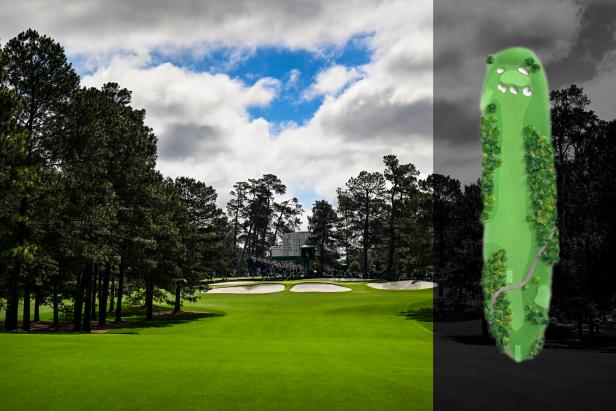The seventh hole at Augusta National Golf Club, known as the “Pampas,” stands out from the other tree and shrub-named holes on the course. It has always been considered the odd one out, never quite fitting in with the rest of the course. The narrow chute of trees that players must navigate through on this flat par 4 makes it a challenging hole. Over the years, it has undergone substantial modifications to increase its difficulty.
Originally designed by Alister MacKenzie and Bob Jones to resemble the 18th hole at St. Andrews, the seventh hole was intended to be a drive-and-pitch hole covering a level, treeless area of land. The bunkerless green was wide and L-shaped, allowing players to use width and ground to get shots onto the green. However, changes made by Horton Smith and Perry Maxwell in the late 1930s transformed the hole, making it longer and more challenging.
As the hole continued to evolve, it became one of the narrower holes on the course, requiring precision off the tee to avoid the encroaching pines. In 2002, the hole was further extended and more trees were added, making it a formidable challenge for players. By 2006, the seventh hole had undergone significant changes, becoming one of the most difficult holes at Augusta National.
The increased length and narrowed fairway of the seventh hole have forced players to adapt their strategy, no longer able to play conservatively off the tee. Competitors must now hit a driver to reach wedge range, navigating between the trees to avoid trouble. This shift has resulted in a higher stroke average on the hole, making it a survival test for players during the Masters tournament.
Despite its origins as a scoring opportunity, the seventh hole has transformed into a challenging test of skill and strategy for players at Augusta National. With its narrow fairway, dense pines, and difficult green, the seventh hole has become a key battleground during the tournament, requiring precision and skill to navigate successfully.


